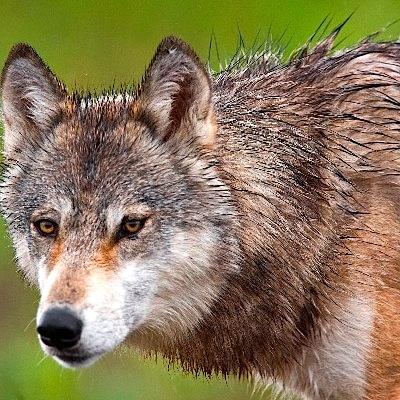
A Denali wolf/NPS
Life can be hard for the integrity of a wolf pack, particularly when one of the alpha animals dies, according to a study at Denali National Park and Preserve in Alaska.
The study, published this month in the Journal of Animal Ecology, concludes that when a breeding wolf dies, "its sex and the size of its pack can determine whether that pack continues or disbands."
In 2012, Denali biologists noted a drop in wolf sightings following the death of a breeding female from a pack that lived along the Denali Park Road. This was one of several instances where the death of an individual wolf, from legal trapping or hunting, sparked widespread media attention and public outcry in recent years, park staff note.
"This isn't the first time we have noticed that the loss of a breeding wolf can affect the fate of the pack. We thought it would be valuable to systematically look at what happens to the pack and population following the death of a breeder," said study author Bridget Borg, a National Park Service biologist and University of Alaska Fairbanks graduate student.
A park release notes that gray wolves typically live in packs consisting of the parents and their offspring from one or more years. In this structure, a wolf pack resembles the concept of a traditional family. Turnover among young members of a pack is common, as they leave to search for mates and start packs of their own. Breeding members typically have a longer tenure in the pack and act as a sort of "social glue."
Borg, along with other NPS researchers and collaborators from UAF and the Alaska Department of Fish and Game, examined data collected on 70 packs during a long-term study of wolves in Denali. They found that breeder loss preceded or coincided with most documented cases of wolf pack dissolution (when a pack disbanded or was no longer found). However, the death of a breeding individual did not always lead to the end of a pack. In approximately two out of three cases where a breeder died, the pack continued.
"It appears that the sex of the lost breeder and the pack size prior to loss were important factors explaining pack fate following the death of a breeder," says Borg. "The probability of a pack continuing was less if a female died or if the pack was small prior to the death."
Borg's data also suggests that the death of a breeder has a greater influence if the wolf died during the pre-breeding or breeding season. "We noticed that human-caused mortality rates were highest during the winter and spring, which correspond to the pre-breeding and breeding seasons for wolves," said Laura Prugh, co-author and wildlife ecologist at the UAF Institute of Arctic Biologist. "Harvest may lower the odds of pack survival because of this timing, especially when pack sizes are small."
Surprising, higher rates of breeder mortality and pack dissolution did not correspond to lower population growth, indicating that the wolf population was resilient to the loss of breeding individuals at a population level, the scientists reported. The authors suggest that wolves may compensate for the death of breeders in a variety of ways, such as rapid replacement of breeders or increased reproductive success the following year.
Although breeder loss appeared to have little impact on the overall Denali wolf population, the loss of individuals may be important at a local level. The researchers found that rates of denning and successfully raising pups into the fall decreased for packs in which a breeder died or was killed. It is the wolf packs that successfully raise pups near the Denali Park Road that tend to be seen most often by park visitors, according to NPS biologists.
"This research has important implications to the current viewability of wolves in the park," said Denali Superintendent Don Striker. "Given the park's current low wolf densities and small average pack sizes, we are concerned about harvest of wolves from packs that reside primarily within the park. The death of a breeding wolf could harm the packs that provide the greatest opportunities for park visitors to see a wolf in the wild, either through a lack of reproduction or the loss of the entire pack."
You can find the entire study here.



Add comment